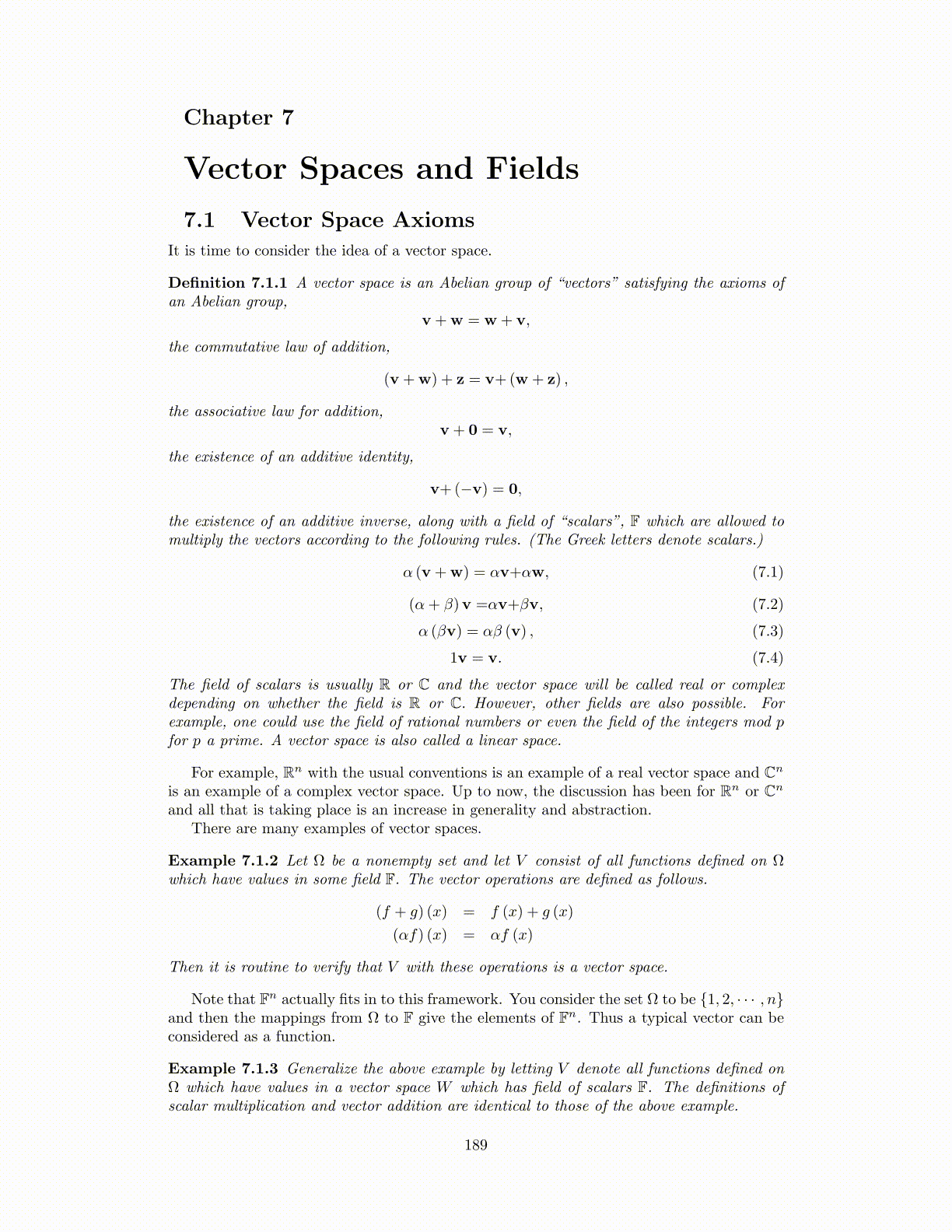
Chapter 7
Vector Spaces and Fields
7.1 Vector Space Axioms
It is time to consider the idea of a vector space.
Definition 7.1.1 A vector space is an Abelian group of “vectors” satisfying the axioms ofan Abelian group,
v +w = w + v,
the commutative law of addition,
(v +w) + z = v+(w + z) ,
the associative law for addition,v + 0 = v,
the existence of an additive identity,
v+(−v) = 0,
the existence of an additive inverse, along with a field of “scalars”, F which are allowed tomultiply the vectors according to the following rules. (The Greek letters denote scalars.)
α (v +w) = αv+αw, (7.1)
(α+ β)v =αv+βv, (7.2)
α (βv) = αβ (v) , (7.3)
1v = v. (7.4)
The field of scalars is usually R or C and the vector space will be called real or complexdepending on whether the field is R or C. However, other fields are also possible. Forexample, one could use the field of rational numbers or even the field of the integers mod pfor p a prime. A vector space is also called a linear space.
For example, Rn with the usual conventions is an example of a real vector space and Cn
is an example of a complex vector space. Up to now, the discussion has been for Rn or Cn
and all that is taking place is an increase in generality and abstraction.There are many examples of vector spaces.
Example 7.1.2 Let Ω be a nonempty set and let V consist of all functions defined on Ωwhich have values in some field F. The vector operations are defined as follows.
(f + g) (x) = f (x) + g (x)
(αf) (x) = αf (x)
Then it is routine to verify that V with these operations is a vector space.
Note that Fn actually fits in to this framework. You consider the set Ω to be {1, 2, · · · , n}and then the mappings from Ω to F give the elements of Fn. Thus a typical vector can beconsidered as a function.
Example 7.1.3 Generalize the above example by letting V denote all functions defined onΩ which have values in a vector space W which has field of scalars F. The definitions ofscalar multiplication and vector addition are identical to those of the above example.
189